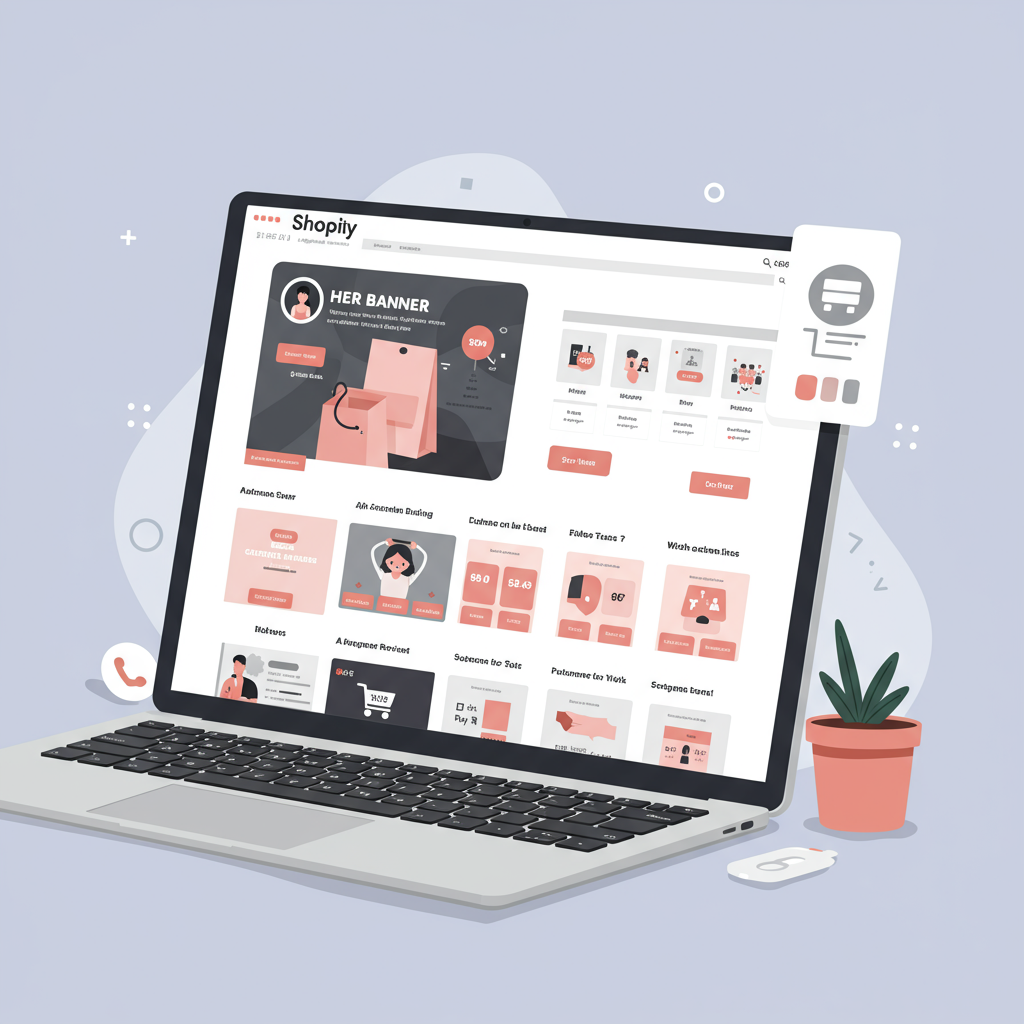Discover the key strategies and trends to make your Shopify store’s homepage a powerful sales engine in the coming year.
As a Shopify merchant, you know your online store’s homepage is more than just a digital storefront; it’s your brand’s first impression, your virtual handshake with potential customers.
In the rapidly evolving e-commerce landscape, staying ahead means constantly refining your approach, especially as we look towards 2025.
The design choices you make today for your Shopify homepage will significantly impact your conversion rates, customer engagement, and ultimately, your bottom line tomorrow.
I’ve spent countless hours analyzing trends and best practices, and I’m excited to share my insights on how to craft a compelling, high-converting homepage for the year 2025.
This isn’t just about aesthetics; it’s about creating an intuitive, engaging, and personalized experience that resonates with your target audience.
One of the most significant shifts we’ll see is the deeper integration of AI to personalize the homepage experience for each visitor.
Imagine a homepage that dynamically adjusts product recommendations, banners, and even messaging based on a user’s browsing history, location, or purchase patterns.
This level of tailored content moves beyond simple ‘customers also bought’ suggestions to a truly unique journey for every individual.
Static images are becoming less impactful. 2025 will demand more dynamic and immersive content.
Think about incorporating 3D product views, augmented reality (AR) try-ons, or high-quality video backgrounds that tell your brand story instantly.
These elements not only capture attention but also build trust and reduce buyer’s remorse by giving customers a clearer sense of the product.
Consumers are increasingly conscious of a brand’s values. Your homepage should subtly, yet clearly, communicate your commitment to sustainability, ethical practices, or social responsibility.
This could be through dedicated sections, trust badges, or even integrated stories about your supply chain. Authenticity here is key.
While this isn’t new, its importance will only intensify. A truly mobile-first design means your homepage is conceived and optimized for smaller screens *before* it’s adapted for desktop.
This impacts everything from navigation menus (think sticky headers and hamburger menus) to image sizes and text readability.
Patience is a virtue few possess online. A slow-loading homepage is a conversion killer. Google’s Core Web Vitals will continue to be paramount.
Optimizing images, leveraging lazy loading, and choosing a lightweight theme are non-negotiable for 2025.
Your hero section is your prime real estate. It needs a compelling headline, a high-quality image or video, and a clear, enticing call-to-action (CTA).
It should immediately convey your unique selling proposition (USP) and what you offer.
Users should be able to find what they’re looking for within seconds. Intuitive menus, search bars, and well-organized categories are crucial.
Consider mega-menus for larger inventories to improve discoverability.
Showcase your bestsellers, new arrivals, or seasonal collections prominently. Use high-quality photography and concise descriptions.
Integrate customer reviews, testimonials, user-generated content (UGC), or media mentions. This builds trust and credibility.
Every section of your homepage should guide the user to the next step. Use clear, action-oriented language for your buttons.
If you have a blog, feature recent articles. This positions you as an authority and provides valuable content for SEO.
Make it easy for customers to find your FAQ, contact information, shipping policies, and return policies. Display security badges.
Beyond speed, ensure your homepage has relevant keywords in its title, meta description, and headings. Optimize image alt text.
Design for everyone. Ensure your site is navigable by keyboard, has sufficient color contrast, and provides alt text for images. This is not just good practice; it’s increasingly a legal requirement.
Don’t guess; test. Continuously A/B test different headlines, images, CTAs, and layouts to see what resonates best with your audience.
Use tools like Google Analytics and Shopify’s built-in reports to understand user behavior on your homepage. Where are they clicking? Where are they dropping off?
The e-commerce world is dynamic. Your homepage design should be flexible and adaptable to new technologies and consumer behaviors.
Choose a Shopify theme that offers customization options and is regularly updated by its developers.
Invest in professional photography and videography. High-quality visuals are timeless and elevate your brand.
Remember, your homepage is a living entity, not a static brochure. It requires ongoing attention, analysis, and refinement.
By embracing these tips and staying attuned to the evolving digital landscape, you’ll be well-equipped to create a Shopify homepage that not only looks fantastic but also drives significant growth for your business in 2025 and beyond.
I truly believe that a well-designed homepage is your most powerful sales tool.
What do you think about this article? I’d love to hear your thoughts and any strategies you’re planning to implement!






